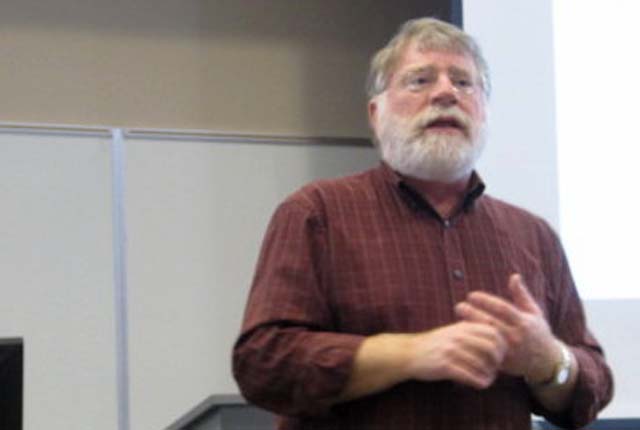Endowments 101

 David Zonderman appreciates the importance of helping students learn the fundamentals about endowments as they consider careers in the nonprofit sector.
David Zonderman appreciates the importance of helping students learn the fundamentals about endowments as they consider careers in the nonprofit sector.
“Most don’t really know what an endowment is before they take the class,” says Zonderman, an NC State History professor who teaches a popular course on the history of nonprofits. “I explain it’s like a bank account, but you don’t spend the money that’s there, just the income it generates.”
Zonderman’s course, a requirement for the nonprofit minor offered through the Institute for Nonprofits, addresses endowments from the perspective of the history of foundations and their connections to the philanthropic world.
The creation of benevolent foundations escalated around the turn of the 20th century when the concept of “scientific philanthropy” first appeared in literature of the period. The idea of focusing on solutions to systemic problems – addressing sanitation, for example, to improve the well-being of countless poor individuals – made sense to several leading industrialists. Among these were Rockefeller and Carnegie, whose fortunes continue to support diverse social needs.
“They wouldn’t have used terms like ‘leverage’ or ‘strategic,’ but that’s essentially what they were doing,” Zonderman says. “Approaching charity in a scientific manner made it possible to help many instead of giving to just a few.”
While some anticipated a collapse of giving during the Great Depression, Zonderman said the period instead created opportunities among those whose wealth was left intact.
“If you look in the 1930s, even when the economy was doing so poorly, many of the big universities strengthened their endowments,” Zonderman says, citing Yale and Harvard as examples that continue to lead today. “People were especially committed to building because labor was cheap. For those with money, it was a good time to expand.”
Surviving tough times and building capital for a stronger future remains the driving force for endowments, even those with smaller footprints. According to Janet Doolin, author of “Endowment 101,” endowments under $10 million are considered to be start-ups. [See info below about an Endowment 101 seminar Doolin is offering.]
Even with donor-approved flexibility, nonprofits must adhere to strict reporting guidelines, as well as common sense policies, such as only touching the principal of a gift in the event of a true emergency.
The principle no doubt resonates with college students who learn the hard way if they exceed their budget. Explaining a bounced check to generous parents can be just as daunting as clearing up an endowment glitch to a donor or board of directors.
“Endowment is a small slice of what we cover in class, but it’s important,” Zonderman says. “It shows that it’s ill advised to spend all of your income. The point is to put some away to guard against future lean years.”
To help nonprofits learn how to build capital to sustain a successful program, the Institute for Nonprofits’ Philanthropy Journal will present “Endowment 101” on Feb. 6 in Raleigh. Janet Doolin will facilitate the all-day, interactive event. Information and registration details are posted online.
By Jill Warren Lucas, managing editor, The Philanthropy Journal
###
- Categories:


